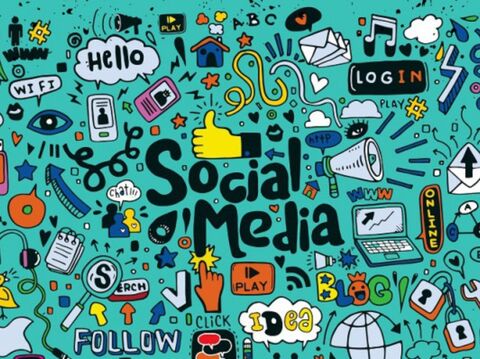The Rise of Ephemeral Content in Video Marketing

Ephemeral content is rapidly transforming video marketing. The idea of content that disappears within a short time might seem odd, but it’s proving to be incredibly effective. This type of content is designed to last for just 24 hours, after which it vanishes.
The appeal lies in its fleeting nature, which creates a sense of urgency. Viewers know they only have a limited time to engage with the content. This drives them to interact immediately, boosting engagement rates significantly. This blog will discuss the basics of ephemeral content.
What is Ephemeral Content?
Ephemeral content is the kind of media that doesn’t stick around for long—usually, it’s available for just 24 hours before it disappears. This includes things like photos, videos, and even text posts that you might see on platforms like Snapchat, Instagram, and Facebook.
The idea is simple: create something that grabs attention quickly, and then it’s gone. This encourages people to engage right away because they know they won’t get another chance. Ephemeral content is becoming increasingly popular for the following reasons:
-
Temporary in Nature
Ephemeral content is designed to be here today, gone tomorrow. This creates a sense of urgency. People feel the need to check it out and interact with it immediately because they know it won’t be there later. The fact that it’s temporary makes it more exciting, pushing people to act fast.
-
Builds Personal Connection
The content feels more organic and less professionally produced as compared to permanent content. This makes it easier for the brands to make a direct impact on their audience by reaching a personal level. It shows a more human impact on people’s trust and loyalty. Once consumers find that a particular brand is genuine, they are most likely to fully dedicate themselves to it.
-
Encourages Regular Interaction
Due to constant updates and changes, ephemeral content keeps people on their toes. No one wants to miss out on the next update, so everyone remains vigilant about the next steps. This helps keep the audience engaged and interested in the brand's operations.
Platforms to Use Ephemeral Content in Video Marketing
Some platforms are particularly suitable for sharing short videos, including media that is popular nowadays—ephemeral video content. Such platforms have the option of posting captivating videos that exist for a limited period, making brands popular.
-
Instagram Stories
Instagram Stories is considered the most used platform for the sharing of temporary content. It allows brands to post images, videos, and text-based messages that last only for 24 hours.
Stories are placed at the top of the Instagram feed, making them easily seen by other followers. It has become apparent that stories are an ideal platform for brands to post daily updates, behind-the-scenes content, and special promotions.
-
Snapchat
Originally, ephemeral content was popular on the platform that is now known as Snapchat. The platform enables people to share images and videos that disappear once they are received and opened.
Brands use Snapchat to target and connect with the younger population by sharing fun and interactive content. Hashtags, the lens and filter features, together with geo-location make these posts as exciting as they are short-lived.
-
Facebook Stories
Facebook Stories function in the same way as Instagram Stories. These appear at the top of the Facebook page and remain visible for only 24 hours.
Some brands still have large followings on Facebook. They utilize this platform to cover older demographics who don't use Instagram or Snapchat. Facebook Stories are perfect for the advertisement of events and viral content updates and are appropriate for everyone.
Why Ephemeral Content Works for Brands
Ephemeral content is rather helpful for brands as it targets the psychological aspects of urgency and novelty. Here are some reasons why this type of content works so well:
-
Creates Urgency
The essence of the message communicated in ephemeral content is to urge viewers to take action swiftly due to limited availability. This sense of urgency can translate to higher engagement rates since people do not want to miss the content posted.
-
Cost-Effective Production
Ephemeral video content does not need much effort as compared to developing permanent content. Companies can create quick, unpolished videos without having to strive for them to be perfect. This lessens necessary expenses and provides an opportunity to try out more creatively.
-
Expands Reach
Many social media networks push temporary content to the foreground, which means that such content has more exposure than it would have otherwise. This may help the branding process to reach the right large number of people that companies want and hence, increasing the target audience.
Furthermore, since ephemeral content is short-lived, people will need to continue tuning in later to see more content, leading to repeat visits.
Examples of Ephemeral Content in Video Marketing
Let’s explore some ephemeral content examples that highlight how brands are using this type of content to engage their audiences:
-
Nykaa on Instagram Stories
Nykaa, the leading beauty brand in India, uses Instagram Stories mostly to launch the news of upcoming products. They share short clips and images that demonstrate the latest products, along with tips on how to apply them. This makes Nykaa one of the most apt ephemeral content examples.
Nykaa includes direct links labelled as "Shop Now" to make it easy for viewers to buy the products from the Stories themselves. Because the content disappears after 24 hours, it creates excitement and encourages quick action. This strategy helps Nykaa to connect with the target audience organically while driving sales.
-
Finance with Sharan on YouTube Shorts
Finance with Sharan, a well-known finance educator, uses YouTube Shorts to share quick financial tips. These short videos cover topics like saving money, budgeting, and investing. Each video is brief but packed with useful advice that’s easy to understand.
The quick format makes the content accessible, even for those who don’t have much time. By using YouTube Shorts, Sharan makes financial knowledge more approachable and keeps his audience engaged with regular, bite-sized tips.
Future of Ephemeral Content in Video Marketing
As social media platforms continue to evolve, ephemeral content is expected to play an even larger role in how brands engage with their audiences. The demand for authentic, in-the-moment interactions is growing, and ephemeral content is perfectly suited to meet this need.
-
Increased Use of Live Video
Live video is getting more popular. We will likely see more brands using live video in their ephemeral content.
Live video allows brands to interact with their audience in real time. It makes the experience more engaging and personal. As platforms improve their live video features, this trend will grow.
-
Integration Across More Platforms
New social media trends in platforms will continue to emerge. Ephemeral content will likely be a key feature on these platforms. This gives brands more chances to reach their audience with short, impactful content. As a result, ephemeral content will become a bigger part of marketing strategies.
-
Focus on Personalization
Personalization is becoming more important in marketing. Ephemeral content will likely follow this trend. Brands might start tailoring their ephemeral content to individual viewers. This could mean creating content based on what a viewer likes or their past interactions with the brand.
-
Sustainability Considerations
Ephemeral content may become more environmentally friendly as people's awareness of sustainability grows.
Since it is temporary, it equally does not demand what permanent content does in terms of storage and bandwidth. This might make brands think differently from their comfort zones in what they consider usual video marketing trends.
Wrapping Up
Ephemeral content isn’t an overnight phenomenon. It’s a powerful tool t which is hardly going to disappear soon. The fact that it is temporary creates high levels of engagement, keeps it real and makes brands access audiences in real time.
As video marketing continues to evolve, ephemeral content could prove to be an effective method of attracting customers. This way brands can develop memorable short-haul engagement with the audience that will help to communicate a certain message.
Contact GrowthJockey today and learn more about how ephemeral content can be remarkable for your brand’s growth.
FAQs
1. What is an example of ephemeral content?
An ephemeral content example is an Instagram Story that disappears after 24 hours. These Stories are used by brands to share quick updates, limited-time offers, or behind-the-scenes looks, encouraging immediate engagement.
2. Why is ephemeral content popular?
Ephemeral content is popular because it creates a sense of urgency and exclusivity. The temporary nature of the content drives users to interact quickly, making them feel like they are part of a special, time-sensitive experience. This leads to higher engagement and a more personal connection with the brand.
3. What are the examples of ephemeral content in video marketing?
Ephemeral content in video marketing examples includes Nike’s Instagram Stories, Gucci’s Snapchat campaigns, Starbucks’ Facebook Stories, Red Bull’s YouTube Shorts, and Adobe’s LinkedIn Stories. These brands use ephemeral content to engage with their audiences in real time, creating a sense of immediacy and relevance.








